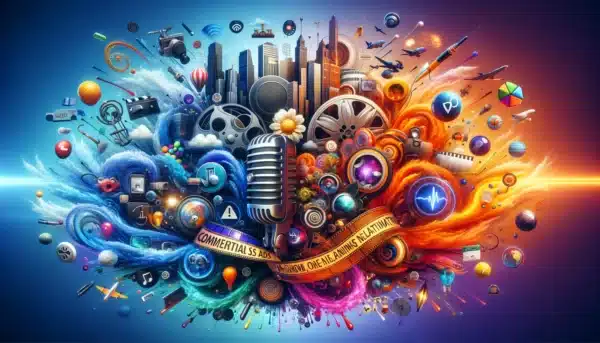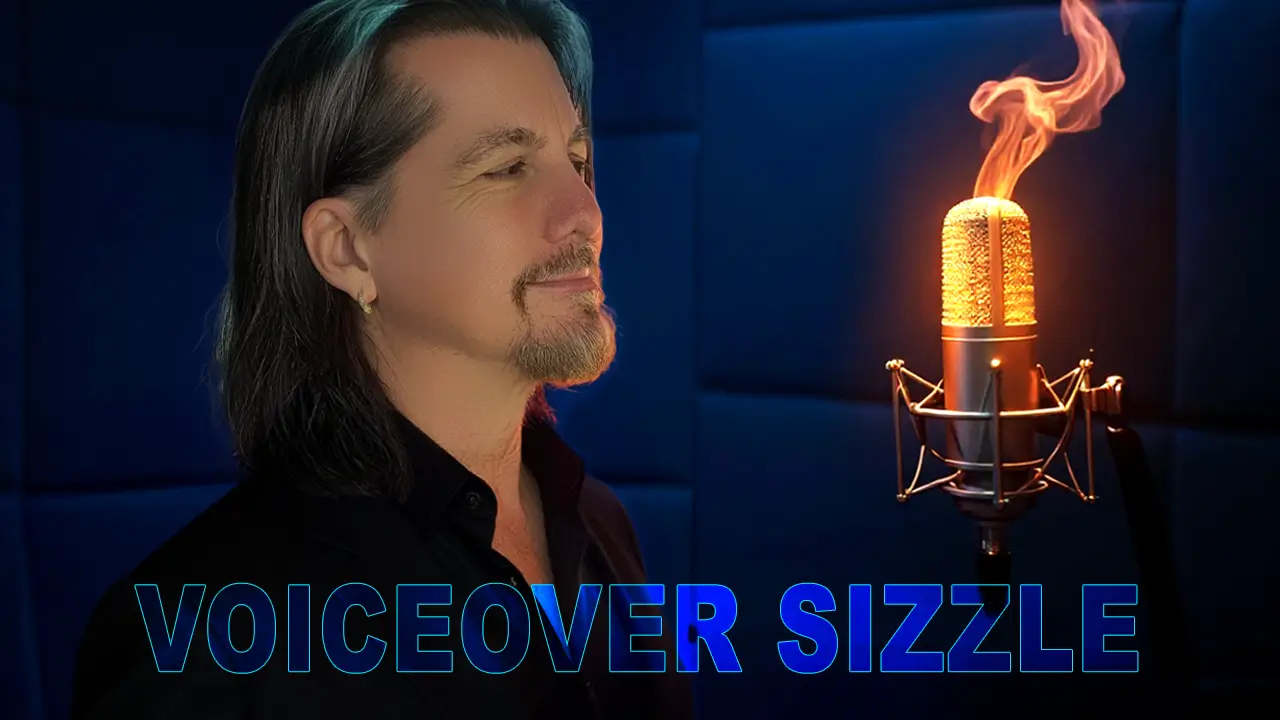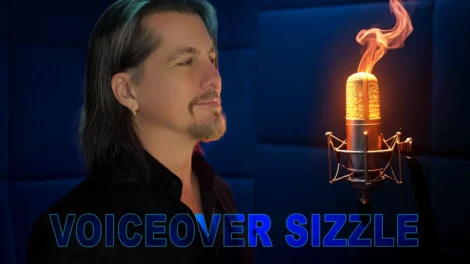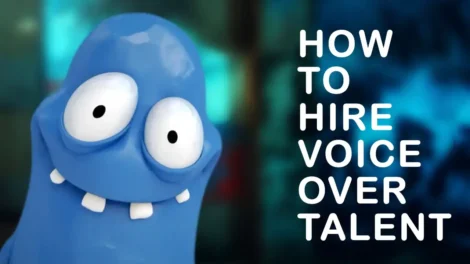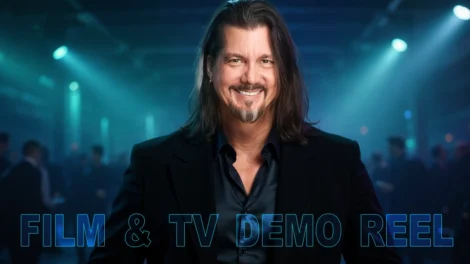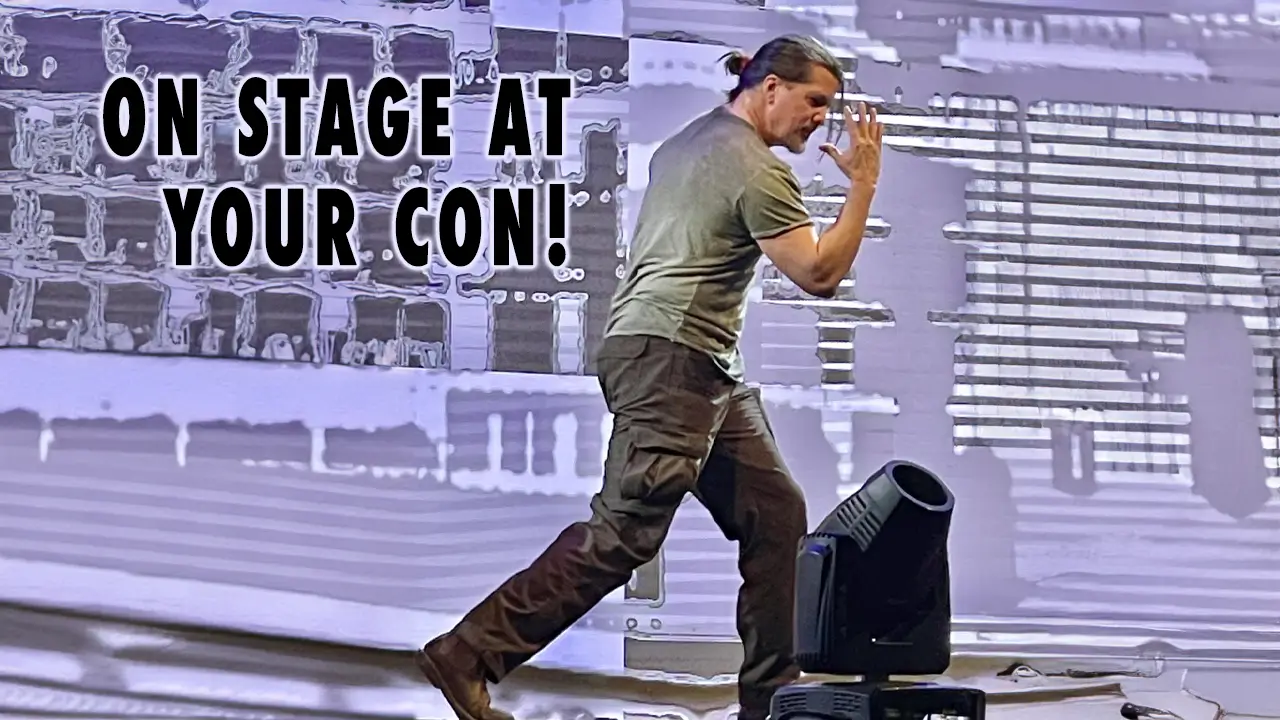The Importance of Voiceover in Business and Entertainment
Voiceover is an essential element in both business and entertainment sectors, providing a unique and impactful way to convey messages, tell stories, and engage audiences. Its versatility and effectiveness make it a critical tool for a wide range of applications, from corporate narration to commercials, political ads to in-show narration, and much more.
In the corporate world, voiceover plays a significant role in delivering internal communications, training materials, and company overviews. A well-crafted narration can make complex information more accessible and engaging, helping businesses to effectively educate and inform their employees.
Commercials are another major area where voiceover is indispensable. Whether for TV, radio, or online platforms, a compelling voiceover can capture attention, convey key messages, and drive consumer action. The right voice can add personality and emotion to a brand, making it more relatable and memorable.
The importance of voiceover is also evident in political advertising. During election seasons, political ads leverage powerful voiceovers to influence voters, highlight campaign messages, and create emotional connections with the audience. The impact of a strong, authoritative voice cannot be overstated in this highly competitive arena.
In the realm of entertainment, in-show narration enhances the storytelling experience by providing context, background information, and continuity. Whether it’s a reality TV show, documentary, or dramatic series, narration helps to guide viewers through the narrative, making the content more immersive and comprehensible.
Promos are short segments designed to promote TV shows, movies, or special events, and voiceover is key to their success. A dynamic and engaging voice can build excitement and anticipation, encouraging audiences to tune in and watch.
The animation industry relies heavily on voiceover artists to bring characters to life. From TV shows and movies to web series, animated content is enriched by voices that add depth, personality, and humor, making the characters more vivid and engaging.
The rise of the video game industry has opened up vast opportunities for voiceover work. Games today feature complex narratives and richly developed characters, requiring talented voice actors to provide dialogue, create immersive experiences, and enhance gameplay.
In the field of e-learning, voiceover is used to deliver educational content, online courses, and instructional videos. A clear and articulate voice can improve comprehension and retention, making learning more effective and enjoyable for students of all ages.
Finally, the healthcare and medical narration sector benefits from professional voiceover to communicate critical information in training videos, patient information materials, and pharmaceutical promotions. A trustworthy and knowledgeable voice can make complex medical information more accessible to both professionals and the general public.
The importance of voiceover in these sectors underscores its role as a powerful tool for communication and engagement. As businesses and entertainment continue to evolve, the demand for skilled voiceover artists will only grow, highlighting the enduring value of the human voice in connecting with audiences.
The Power of Corporate Narration: Shaping Brand Identity Through Voice
In the dynamic world of business, effective communication plays a pivotal role in shaping brand identity and connecting with audiences. Among the various tools at a company’s disposal, corporate narration has emerged as a powerful medium for storytelling, information dissemination, and establishing a unique brand voice. Throughout business history, corporate narration has evolved from simple voice-overs to a strategic asset that can make or break a brand’s perception.
Corporate narration, at its core, involves the use of voice talent to convey a company’s message, values, and personality. Whether it’s through brand videos, explainer animations, or audio advertisements, the right voice can captivate audiences and create a lasting impression. A well-crafted script, delivered by a skilled voice artist, has the power to evoke emotions, build trust, and foster a connection between the brand and its target audience.
Throughout business history, corporate narration has played a significant role in shaping brand identities. One of the most iconic examples is the long-standing partnership between Apple and voice artist Susan Bennett, who became the voice of Siri, Apple’s virtual assistant. Bennett’s warm and friendly voice helped humanize the technology and contributed to Siri’s popularity and acceptance among users.
Another notable example is the distinctive voice of Don LaFontaine, known as the “King of Movie Trailers.” LaFontaine’s deep, gravelly voice became synonymous with blockbuster movie trailers, lending an air of excitement and anticipation to countless films. His iconic phrase, “In a world…,” became a cultural touchstone and exemplified the power of a memorable voice in capturing audience attention.
In recent years, corporate narration has expanded beyond traditional media and into the realm of voice technology. With the proliferation of smart speakers and voice assistants like Amazon’s Alexa and Google Assistant, brands are exploring new ways to engage with customers through voice interfaces. Corporate narration plays a critical role in designing voice experiences that align with a brand’s identity and provide value to users.
The importance of corporate narration lies in its ability to create a consistent and recognizable brand voice across various touchpoints. By carefully selecting voice talent and crafting scripts that resonate with the target audience, companies can establish a strong brand personality and differentiate themselves from competitors. A well-executed corporate narration strategy can enhance brand recall, boost engagement, and ultimately drive business success.
As businesses continue to evolve and adapt to changing consumer preferences, corporate narration remains a vital tool in the marketing arsenal. By leveraging the power of voice, companies can tell compelling stories, educate audiences, and build lasting relationships with their customers. In a world where attention spans are short and competition is fierce, the art of corporate narration has the potential to set brands apart and leave a lasting impact on the minds of consumers.
The Evolution and Impact of Commercial Voiceover
Commercial voiceover has been a critical component of advertising for decades, evolving from the early days of radio to the sophisticated multimedia campaigns of today. The history of commercial voiceover is rich with iconic moments, famous campaigns, and notable voice actors who have left an indelible mark on the industry.
Historical Background
The use of voiceover in commercials began in the early 20th century with the advent of radio. Radio commercials were among the first to utilize voice actors to promote products and services. One of the earliest examples is the iconic Lucky Strike cigarette ad campaign, which used catchy jingles and persuasive voiceovers to captivate audiences.
As television became the dominant medium in the mid-20th century, voiceover continued to play a vital role in advertising. The 1960s and 1970s saw the rise of memorable commercials such as the “I’d Like to Buy the World a Coke” campaign by Coca-Cola, which featured a soothing voiceover that complemented the visual imagery of people from around the world coming together in harmony.
Famous Campaigns
Several commercial campaigns have become legendary due to their effective use of voiceover. One such campaign is the McDonald’s “You Deserve a Break Today” campaign from the 1970s. The warm and friendly voiceover helped establish an emotional connection with consumers, making the slogan synonymous with McDonald’s.
Another notable example is the Apple “Think Different” campaign. The voiceover, narrated by Richard Dreyfuss, celebrated those who “think differently,” aligning Apple’s brand with innovation and creativity. This campaign is often cited as a turning point in advertising, showcasing the power of a well-crafted voiceover to convey a brand’s ethos.
Famous Voice Actors
Over the years, several voice actors have gained fame for their work in commercial voiceover. One of the most recognizable voices is that of Don LaFontaine, known as “The Voice of God.” LaFontaine’s deep, resonant voice became synonymous with movie trailers, but he also lent his voice to numerous commercials, bringing a dramatic flair that captured audiences’ attention.
Another prominent voice actor is Morgan Freeman. His distinctive and authoritative voice has been featured in a variety of commercials, from Visa to Netflix. Freeman’s voice brings a sense of gravitas and trustworthiness, making him a sought-after talent for brands looking to make a lasting impression.
Best Practices for Utilizing Commercial Voiceover
To effectively utilize voiceover in commercial campaigns, it is essential to consider several best practices. First, selecting the right voice actor is crucial. The voice should align with the brand’s identity and resonate with the target audience. A well-chosen voice can enhance the emotional impact of the message and improve brand recall.
Secondly, the script is vital. A compelling voiceover script should be clear, concise, and engaging. It should complement the visual elements of the commercial and reinforce the key messages. Collaborating with experienced scriptwriters can ensure that the voiceover effectively communicates the brand’s message.
Additionally, sound quality is paramount. Investing in professional recording equipment and studios can make a significant difference in the final output. Clear and crisp audio enhances the overall production value and ensures that the message is delivered effectively.
Finally, it is essential to test the commercial with different audiences before its official release. Feedback from focus groups can provide valuable insights into how the voiceover is perceived and whether it effectively conveys the intended message.
In the end, commercial voiceover is a powerful tool in the advertising arsenal. Its evolution, marked by historical milestones, famous campaigns, and iconic voice actors, underscores its significance in creating memorable and impactful advertisements. By adhering to best practices, brands can harness the full potential of voiceover to connect with audiences and drive their marketing success.
The Influence of Political Commercials: Shaping Public Opinion Through Television and Radio
In the high-stakes world of politics, effective communication is the key to winning hearts and minds. Political commercials, both on television and radio, have long been a powerful tool for candidates and campaigns to convey their messages, persuade voters, and shape public opinion. From the earliest days of broadcast media to the digital age, political commercials have evolved to become a ubiquitous and influential presence in the political landscape.
Television commercials, in particular, have been a game-changer in political campaigning. The visual medium allows candidates to present themselves in a carefully crafted manner, showcasing their personality, values, and vision for the future. Through a combination of compelling imagery, persuasive messaging, and emotional appeals, television commercials can create a strong impression on viewers and sway their opinions. The famous “Daisy Girl” ad from Lyndon B. Johnson’s 1964 presidential campaign is a prime example of the power of television advertising to evoke fear and influence voter behavior.
Radio commercials, while lacking the visual element, have their own unique advantages in political campaigning. The intimate nature of radio allows candidates to connect with listeners on a personal level, creating a sense of one-on-one communication. Radio commercials are often used to target specific demographics, such as commuters or rural audiences, and can be more cost-effective than television advertising. The famous “It’s Morning Again in America” ad from Ronald Reagan’s 1984 re-election campaign exemplifies the effectiveness of radio in conveying a sense of optimism and hope.
The content of political commercials varies widely, ranging from positive messaging that highlights a candidate’s achievements and vision to negative attacks that aim to undermine opponents. Negative advertising has become increasingly prevalent in modern campaigns, with candidates and their supporters using commercials to raise doubts about their rivals’ character, record, or policies. While negative ads can be effective in swaying voter opinion, they also risk alienating some voters who may view them as too divisive or unfair.
The impact of political commercials on public opinion is significant and well-documented. Studies have shown that well-crafted commercials can increase a candidate’s name recognition, favorability ratings, and likelihood of winning an election. In close races, the effectiveness of political advertising can be the deciding factor. However, the influence of commercials is not unlimited, and their impact can be moderated by factors such as the credibility of the messenger, the relevance of the message to voters’ concerns, and the overall media environment.
In the digital age, political commercials have adapted to new platforms and technologies. Social media and online advertising have become increasingly important channels for campaigns to reach voters, especially younger demographics. Digital advertising allows for more precise targeting and personalization of messages, as well as real-time optimization based on user engagement. However, the rise of digital advertising has also raised concerns about the spread of misinformation and the potential for foreign interference in elections.
As the political landscape continues to evolve, the role of political commercials in shaping public opinion remains as crucial as ever. Whether on television, radio, or digital platforms, these ads have the power to inform, persuade, and mobilize voters. As citizens, it is important to approach political advertising with a critical eye, seeking out multiple sources of information and making informed decisions based on a candidate’s record and policies, rather than solely on the emotional appeals of their commercials.
The Role and Impact of In-Show Narration
In-show narration is a pivotal element in television and film, enhancing storytelling by providing context, guiding viewers, and adding depth to the narrative. This technique has evolved significantly over the years, becoming an integral part of many iconic shows and movies. Understanding its history, notable examples, and best practices can shed light on its importance in the entertainment industry.
Historical Background
The use of narration in shows dates back to the early days of radio and cinema. One of the earliest examples is the 1930s radio show “The Shadow”, where the narrator’s voice set the tone and guided the audience through each episode. As television became popular, in-show narration continued to play a critical role, with shows like “The Twilight Zone” using Rod Serling’s iconic voice to introduce and conclude each episode, adding a layer of intrigue and suspense.
Famous Campaigns
In-show narration has been central to many successful TV shows and movies. One notable example is the critically acclaimed series “The Wonder Years”. The show’s narration, provided by Daniel Stern, offered insight into the main character’s thoughts and emotions, creating a nostalgic and relatable experience for viewers.
Another exemplary use of narration is found in “Game of Thrones”. While not a traditional narrator, the show’s use of character-driven narration and monologues helped convey the complex storyline and deepened the audience’s understanding of the characters’ motivations and backgrounds.
Famous Voice Actors
Several voice actors have become synonymous with in-show narration due to their distinctive voices and compelling delivery. One such actor is Morgan Freeman, whose narration in films like “The Shawshank Redemption” has become iconic. Freeman’s soothing yet authoritative voice has the power to draw viewers in and enhance the emotional impact of the story.
Another renowned voice actor is David Attenborough, known for his work on nature documentaries such as “Planet Earth”. Attenborough’s narration combines informative content with a sense of wonder, making the natural world accessible and fascinating to a global audience.
Best Practices for Utilizing In-Show Narration
To effectively utilize in-show narration, it is essential to follow several best practices. Firstly, the choice of narrator is crucial. The narrator’s voice should match the tone and style of the show, whether it’s the authoritative presence of Morgan Freeman or the engaging storytelling of David Attenborough.
Secondly, the script for the narration should be carefully crafted. It should complement the visual elements and provide additional context without overwhelming the viewer. A well-written narration can enhance the storytelling by filling in gaps and providing insights that the visuals alone cannot convey.
Sound quality is another critical factor. Professional recording equipment and environments ensure that the narration is clear and free from distractions. High-quality audio enhances the overall production value and ensures that the narrator’s voice is a seamless part of the viewing experience.
Finally, integrating the narration with the show’s visual elements is essential. This involves careful timing and editing to ensure that the narration aligns with the visuals, creating a cohesive and engaging narrative flow.
In the end, in-show narration is a powerful tool in television and film, enriching the storytelling experience and deepening audience engagement. By understanding its history, recognizing iconic examples, and adhering to best practices, creators can effectively leverage narration to enhance their content and connect with viewers on a deeper level.
The Art of Anticipation: How Promos and Trailers Captivate Audiences
In the fast-paced world of entertainment, promos and trailers have become essential tools for generating buzz, building anticipation, and enticing audiences to engage with a product. Whether promoting a highly anticipated movie, a new television series, or a groundbreaking video game, promos and trailers have the power to create a lasting impression and influence consumer behavior.
Trailers, particularly in the film industry, have a rich history dating back to the early 20th century. Initially shown after feature films, hence the name “trailers,” these short previews have evolved into a highly sophisticated art form. Modern movie trailers are meticulously crafted to showcase the most exciting and intriguing aspects of a film while leaving enough mystery to pique viewers’ curiosity. The use of captivating visuals, pulse-pounding music, and strategic editing can make a trailer an event in itself, generating millions of views and sparking widespread discussion on social media platforms.
Television promos, on the other hand, serve a slightly different purpose. While movie trailers aim to attract audiences to a one-time event, TV promos are designed to keep viewers engaged with a series over an extended period. They often highlight the most dramatic or comedic moments from upcoming episodes, teasing plot developments and character arcs to maintain audience interest. In the era of streaming and binge-watching, promos have become even more crucial in encouraging viewers to continue their viewing journey and anticipate future seasons.
The impact of promos and trailers on audience engagement is well-documented. Studies have shown that well-crafted trailers can significantly increase a movie’s opening weekend box office performance. In the television industry, promos play a vital role in driving live viewership and reducing audience attrition between episodes. Effective promos can also generate social media buzz, encouraging viewers to share their excitement and speculate about upcoming plot twists.
The art of creating compelling promos and trailers lies in understanding the target audience and crafting a narrative that resonates with their interests and emotions. A skilled editor can take hours of footage and distill it into a concise, impactful preview that captures the essence of the product. The use of iconic quotes, memorable visuals, and strategic reveals can create a sense of anticipation that lingers long after the promo has ended. For example, the trailer for “Inception” masterfully teased the film’s mind-bending concept and stunning visuals, leaving audiences eager to unravel its mysteries.
In recent years, the rise of social media and online video platforms has transformed the landscape of promos and trailers. Studios and networks now create multiple versions of trailers tailored for different platforms and audiences. Teasers, sneak peeks, and behind-the-scenes featurettes have become common tactics to maintain buzz and engage fans throughout a product’s life cycle. The instant feedback and viral potential of social media have also made it easier for creators to gauge audience reaction and adjust their promotional strategies accordingly.
As the entertainment industry continues to evolve, the role of promos and trailers in shaping audience expectations and driving engagement remains paramount. Whether delivered through traditional broadcast channels or cutting-edge digital platforms, these bite-sized previews have the power to captivate, excite, and inspire audiences. As consumers navigate an increasingly crowded media landscape, the art of crafting the perfect promo or trailer will continue to be a vital skill for content creators and marketers alike.
The Impact of Voiceover in Animation and Cartoons
Voiceover in animation and cartoons has been a cornerstone of the genre, bringing characters to life and creating immersive worlds that captivate audiences of all ages. The evolution of voice acting in animation is marked by iconic performances, memorable characters, and a profound influence on the storytelling process. This article explores the history, famous campaigns, notable voice actors, and best practices for utilizing voiceover in animation and cartoons.
Historical Background
The use of voiceover in animation dates back to the early 20th century with the advent of synchronized sound in cartoons. One of the earliest and most influential examples is Walt Disney’s “Steamboat Willie”, which introduced audiences to Mickey Mouse and demonstrated the potential of combining voice with animation. This groundbreaking work set the stage for the future of animated storytelling.
The Golden Age of Animation, spanning the 1930s to the 1950s, saw the rise of iconic characters and voices. Mel Blanc, known as “The Man of a Thousand Voices,” became legendary for his work with Warner Bros., voicing characters such as Bugs Bunny, Daffy Duck, and Porky Pig. His versatility and creativity set a high standard for voice acting in animation.
Famous Campaigns
Many animated shows and movies have become cultural touchstones due to their exceptional voiceover work. One such example is Disney’s “The Lion King”. The film’s star-studded cast, including James Earl Jones as Mufasa and Jeremy Irons as Scar, brought depth and gravitas to their characters, contributing to the film’s enduring popularity.
Another iconic campaign is Pixar’s “Toy Story” series. Featuring Tom Hanks as Woody and Tim Allen as Buzz Lightyear, the voiceover performances helped create beloved characters that resonated with audiences worldwide. The success of “Toy Story” demonstrated the power of well-executed voice acting in animated films.
Famous Voice Actors
The world of animation has been shaped by numerous talented voice actors. One of the most influential is Mel Blanc, whose work laid the foundation for modern voice acting in cartoons. His ability to create distinct and memorable characters remains unmatched.
More recently, actors like Tara Strong have made significant contributions to the field. Known for her roles in shows such as “The Powerpuff Girls” and “Teen Titans”, Strong’s versatility and dynamic performances have made her a prominent figure in animation.
Best Practices for Utilizing Voiceover in Animation
To effectively utilize voiceover in animation, it is crucial to follow several best practices. Firstly, casting the right voice actor is essential. The actor’s voice should align with the character’s personality and the overall tone of the animation. A well-chosen voice can add depth and authenticity to the character, enhancing the viewer’s connection to the story.
Secondly, the script should be carefully crafted to complement the visual elements of the animation. Dialogue should be clear, engaging, and appropriate for the character and setting. Collaborating with experienced writers can help ensure that the voiceover effectively supports the narrative.
High-quality sound recording is another critical factor. Professional studios and equipment can make a significant difference in the final output. Clear and crisp audio ensures that the voiceover is free from distractions and fully integrated into the animation.
Finally, the integration of voiceover with animation requires precise timing and synchronization. This involves close collaboration between voice actors, directors, and animators to ensure that the voiceover matches the character’s movements and expressions, creating a seamless and believable performance.
In the end, voiceover is a vital component of animation and cartoons, bringing characters to life and enriching the storytelling experience. The history of animation is filled with iconic performances and memorable characters, underscoring the importance of skilled voice acting. By following best practices, creators can harness the power of voiceover to create engaging and impactful animated content.
The Gameplay of Hype: How Video Game Trailers and Promos Fuel Excitement
In the dynamic and ever-evolving world of video games, trailers and promos have become indispensable tools for generating hype, captivating gamers, and driving sales. As the gaming industry continues to grow and compete for players’ attention, game developers and publishers have mastered the art of creating compelling previews that showcase their games’ unique features, immersive worlds, and thrilling gameplay.
Video game trailers have come a long way since the early days of gaming. What began as simple, text-based descriptions or static images have transformed into cinematic experiences that rival Hollywood blockbusters. Modern game trailers often feature stunning graphics, intense action sequences, and emotional storytelling that give players a tantalizing glimpse into the game’s universe. These trailers not only showcase the game’s visual and audio prowess but also tease the central storyline, characters, and gameplay mechanics, leaving gamers eager to explore more.
One of the most iconic examples of a game trailer that effectively generated hype is the trailer for “Dead Island.” Released in 2011, the trailer featured a hauntingly beautiful and emotionally charged reverse chronology of a family’s tragic encounter with zombies. The trailer’s unique storytelling approach and powerful imagery resonated with gamers, causing the video to go viral and propelling “Dead Island” to the top of many most-anticipated game lists.
In addition to trailers, video game promos have become increasingly sophisticated and multifaceted. Developers and publishers employ a wide range of promotional tactics to build anticipation and engage with their target audience. These promos can include gameplay demos, behind-the-scenes featurettes, developer interviews, and even interactive experiences that allow players to immerse themselves in the game’s world before its release. The PlayStation 5 reveal event in June 2020 exemplified the power of promos, as it not only showcased the console’s hardware but also featured a lineup of highly anticipated games, generating significant buzz and pre-orders.
The impact of video game trailers and promos on player engagement and sales cannot be overstated. A well-crafted trailer can generate millions of views, spark widespread social media discussions, and create a sense of “fear of missing out” among gamers. Promos help maintain player interest and excitement throughout the game’s development and launch cycle, fostering a sense of community and loyalty. The success of games like “Cyberpunk 2077” and “Animal Crossing: New Horizons” can be attributed in part to their effective promotional campaigns that built a strong connection with their target audiences.
In the age of digital distribution and live-service games, trailers and promos have also evolved to keep players engaged post-launch. Developers use trailers to announce new content updates, expansions, and seasonal events, ensuring that their games remain fresh and relevant. Live-service games like “Fortnite” and “Apex Legends” have mastered the art of using trailers and promos to generate excitement for each new season, introducing new characters, weapons, and storylines that keep players invested.
As the video game industry continues to evolve and become more competitive, the role of trailers and promos in driving player engagement and sales will only grow in importance. Developers and publishers will need to continually innovate and push the boundaries of what’s possible in game previews to stand out in a crowded market. By crafting compelling trailers and promos that capture the essence of their games and resonate with their target audience, video game creators can fuel the hype and anticipation that drives the industry forward.
The Importance of Voiceover in E-Learning
Voiceover in e-learning has become an essential tool for enhancing the educational experience, providing clarity, engagement, and a personal touch to online courses and instructional materials. The evolution of e-learning, particularly with the advent of digital technology, has been significantly influenced by the effective use of voiceover. This article delves into its history, notable examples, renowned voice actors, and best practices for utilizing voiceover in e-learning.
Historical Background
The integration of voiceover in e-learning dates back to the early days of computer-based training in the 1980s. Early e-learning modules often featured simple narration to guide users through the material, making complex information more accessible. As technology advanced, so did the quality and sophistication of voiceover in educational content. The introduction of multimedia elements in the 1990s, including audio narration, video, and interactive elements, revolutionized the e-learning landscape.
With the rise of the internet in the late 1990s and early 2000s, e-learning platforms began to proliferate, and voiceover became a standard feature in online courses. The ability to access learning materials anytime and anywhere made e-learning an attractive option for students and professionals alike. High-quality voiceover helped to bridge the gap between traditional classroom instruction and online learning, providing a more engaging and humanized experience.
Famous Campaigns
Several e-learning platforms and courses have effectively utilized voiceover to enhance the learning experience. One prominent example is Khan Academy, which offers a vast array of educational videos with clear and concise voiceover explanations. The platform’s success is largely attributed to its engaging and easy-to-understand narration, which helps students grasp complex topics.
Another notable example is Coursera, a leading online learning platform that partners with universities and organizations worldwide. Coursera’s courses often feature expert instructors who provide voiceover narration, adding a layer of expertise and authority to the content. This approach has proven effective in maintaining student engagement and ensuring high-quality learning experiences.
Famous Voice Actors
While e-learning voiceover may not feature the celebrity status of other voice acting domains, several voice actors have made significant contributions to the field. One such actor is Jennifer Kane, known for her work in educational and instructional voiceover. Her clear and articulate delivery has helped to enhance numerous e-learning courses across various subjects.
Another notable figure is Mathew John, whose versatile voice has been featured in many corporate training programs and educational modules. His ability to convey complex information in an engaging and accessible manner has made him a sought-after talent in the e-learning industry.
Best Practices for Utilizing Voiceover in E-Learning
To maximize the effectiveness of voiceover in e-learning, it is crucial to adhere to several best practices. Firstly, the choice of voice actor is essential. The actor’s voice should be clear, articulate, and well-suited to the subject matter. A professional voice actor can convey the material with the appropriate tone and pace, enhancing comprehension and retention.
Secondly, the script for the voiceover should be carefully crafted. It should be concise, engaging, and tailored to the target audience. The language used should be accessible, avoiding jargon and overly complex terms unless necessary. Collaborating with experienced scriptwriters can ensure that the voiceover effectively supports the learning objectives.
High-quality audio recording is another critical factor. Professional recording equipment and soundproof environments can significantly enhance the clarity and quality of the voiceover. Clear audio free from background noise and distortion ensures that learners can focus on the content without distractions.
Finally, the integration of voiceover with other multimedia elements should be seamless. This includes synchronizing the narration with visual aids, such as slides, videos, and animations. A cohesive and well-timed presentation can greatly enhance the learning experience, making the material more engaging and easier to follow.
In the end, voiceover is a vital component of e-learning, providing clarity, engagement, and a personal touch to online education. By understanding its history, recognizing effective examples, and following best practices, educators and content creators can harness the power of voiceover to deliver high-quality and impactful learning experiences.
Promoting Health and Hope: The Role of Promos and Trailers in Medical and Healthcare Marketing
In the vast and complex world of medical and healthcare, effective communication is crucial for educating the public, promoting health services, and inspiring hope in patients and their families. Promos and trailers have emerged as powerful tools for healthcare providers, pharmaceutical companies, and public health organizations to reach their target audiences and convey important messages.
Healthcare promos and trailers serve a multitude of purposes, from raising awareness about specific health conditions to showcasing the latest medical technologies and treatments. These videos often feature a mix of informative content, emotional storytelling, and compelling visuals to capture the audience’s attention and create a lasting impact. By humanizing healthcare and putting a face to medical conditions, promos and trailers can help break down barriers and reduce the stigma surrounding certain illnesses.
One notable example of a healthcare promo that effectively raised awareness is the ALS Ice Bucket Challenge. In 2014, this viral campaign featured videos of people dumping ice water on themselves to raise money and awareness for amyotrophic lateral sclerosis (ALS). The campaign’s success relied heavily on the power of social media and the participation of celebrities and influencers, demonstrating the potential reach and impact of well-crafted promos in the digital age.
Pharmaceutical companies also rely on promos and trailers to educate patients and healthcare professionals about new medications and treatments. These videos often explain how a drug works, its potential benefits, and any possible side effects. By providing clear and concise information, pharmaceutical promos can help patients make informed decisions about their health and treatment options. The promotional video for the asthma medication Symbicort is an example of how a pharmaceutical promo can effectively communicate a drug’s benefits while also highlighting important safety information.
In the realm of public health, promos and trailers play a vital role in promoting healthy behaviors and preventing the spread of diseases. Public health organizations use these videos to encourage vaccinations, promote safe sex practices, and raise awareness about the dangers of smoking and other harmful habits. The Centers for Disease Control and Prevention’s (CDC) “Tips From Former Smokers” campaign features powerful testimonials from real people who have suffered the consequences of smoking, creating an emotional impact that encourages smokers to quit.
Healthcare promos and trailers also serve to showcase the latest advancements in medical technology and procedures. Videos featuring robotic surgeries, 3D-printed prosthetics, and cutting-edge cancer treatments not only inform the public about these innovations but also instill a sense of hope and optimism for the future of healthcare. By highlighting the dedicated professionals behind these advancements, healthcare promos can also foster trust and confidence in the medical community.
As the healthcare landscape continues to evolve, the role of promos and trailers in medical and healthcare marketing will remain essential. With the growing importance of telemedicine and digital health platforms, video content will become increasingly crucial for engaging with patients and delivering critical information. Healthcare providers and organizations that effectively leverage the power of promos and trailers to educate, inspire, and inform will be well-positioned to make a positive impact on public health and well-being.
As anyone who has been in Hollywood long enough knows, it is evident that a talented and versatile voice actor like D.C. Douglas would be an invaluable asset in any of these sectors. With his extensive experience, range, and ability to connect with audiences, D.C. Douglas is well-equipped to deliver exceptional voiceover performances that drive results and leave a lasting impression.
In the corporate world, D.C. Douglas’s commanding yet relatable voice would be ideal for shaping brand identity, conveying key messages, and engaging employees. His ability to strike the right tone and create a sense of trust would make him a top choice for corporate narration, training materials, and internal communications.
When it comes to commercials and promos, D.C. Douglas’s versatility and emotional range would enable him to create compelling and memorable performances that capture attention and drive action. Whether it’s a high-energy car commercial or a thought-provoking public service announcement, D.C. Douglas has the skills to deliver a powerful and persuasive message.
In the realm of political advertising, D.C. Douglas’s authoritative yet approachable voice would be a valuable asset in shaping public opinion and influencing voters. His ability to convey both strength and sincerity would make him an ideal choice for political campaigns looking to connect with audiences and communicate their message effectively.
D.C. Douglas’s talents would also shine in the world of animation and video games, where his range and versatility would allow him to bring a wide array of characters to life. From heroic protagonists to memorable supporting characters, D.C. Douglas has the acting chops and vocal prowess to create iconic performances that resonate with audiences.
In the e-learning and healthcare sectors, D.C. Douglas’s clear, articulate, and engaging delivery would be instrumental in educating and informing audiences. His ability to break down complex information and convey it in an accessible manner would make him a valuable partner for educational institutions, healthcare providers, and public health organizations looking to create impactful and effective content.
Across all these industries, D.C. Douglas’s professionalism, reliability, and dedication to his craft make him a safe and smart choice for any voiceover project. With his extensive experience, state-of-the-art home studio, and commitment to delivering exceptional results, clients can trust that their project is in capable hands when working with D.C. Douglas.
In the end, D.C. Douglas is a voice actor of the highest caliber, possessing the skills, versatility, and professionalism to excel in any voiceover sector. From corporate narration to animation, political ads to e-learning, D.C. Douglas has the talent and expertise to elevate any project and create powerful, engaging, and memorable performances that drive results and leave a lasting impact on audiences.

